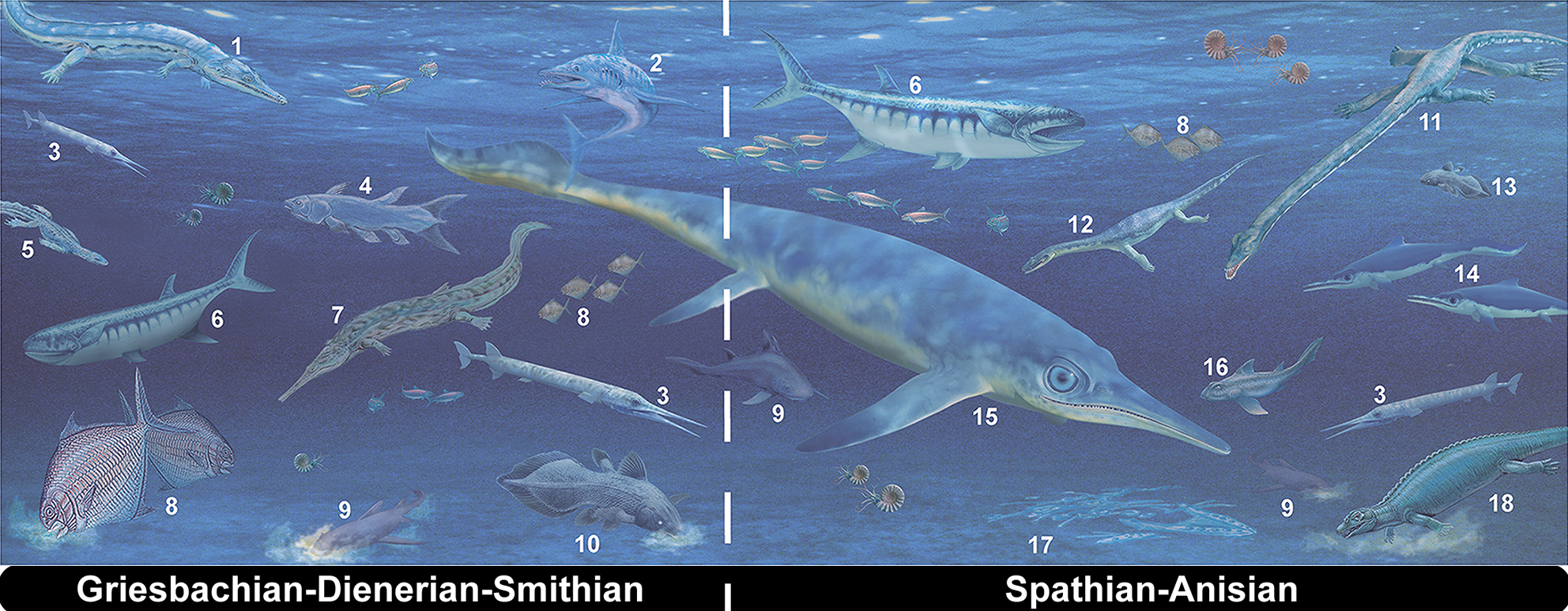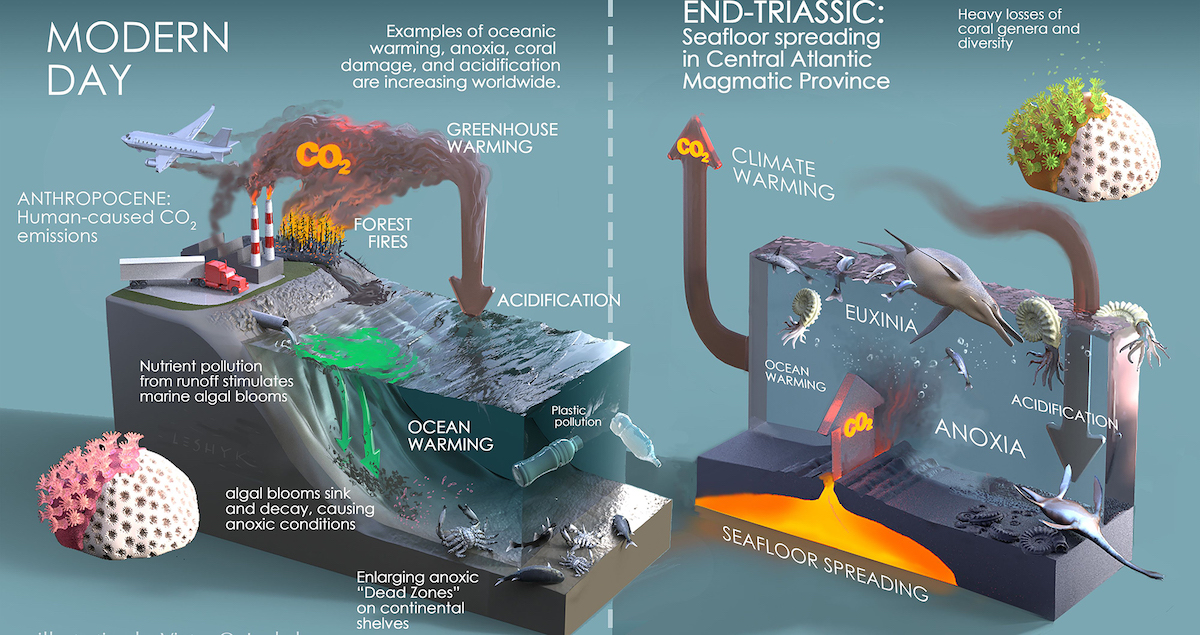A mass extinction some 201 million years ago may have been triggered by changes in the biochemical balance of Panthalassa (also known as the Panthalassic Ocean) – the larger of the two oceans surrounding the supercontinent of Pangaea, according to a team of scientists led by Prof Jessica Whiteside from the University of Southampton, UK.

Life of the Triassic met a choking end in a runaway greenhouse climate, heating the seas into warm stagnation. The greenhouse was caused by carbon dioxide released by massive outpourings of basalt from fissure eruptions associated with the opening of the Atlantic Ocean. The resulting boom in marine microbes consumed oxygen and released poisonous hydrogen sulfide into water and air, creating ‘dead zones’ above and below, worldwide. Hydrogen sulfide poisoning is detected by molecular fossils, depicted in lenses. Image credit: Victor Leshyk.

Prof Whiteside and her colleagues from the United States, Australia, and Canada, have found strong evidence for a condition called marine photic zone euxinia (PZE) as a globally important extinction mechanism for the end-Triassic extinction, also called Triassic-Jurassic extinction (201.3 million years ago).
PZE occurs when the sun-lit surface waters of the ocean become devoid of oxygen and are poisoned by hydrogen sulfide – a by-product of microorganisms that live without oxygen that is extremely toxic to most other life forms.

Several previous studies have reported evidence of PZE from terrestrial and shallow environments during the latest Triassic, but the new study, published online in the journal Geology, is the first to provide such evidence from an open ocean setting, indicating these changes may have occurred on a global scale.
Prof Whiteside’s team studied fossilized organic molecules extracted from sedimentary rocks that originally accumulated on the bottom of the north-eastern Panthalassa, but are now exposed on the Queen Charlotte Islands, Canada.

The scientists found molecules derived from photosynthesizing brown-pigmented green sulfur bacteria – microorganisms that only exist under severely anoxic conditions – proving severe oxygen depletion and hydrogen sulfide poisoning of the upper ocean at the end of Triassic.
They also documented marked changes in the nitrogen composition of organic matter, indicating that disruptions in marine nutrient cycles coincided with the development of low oxygen conditions.

“As tectonic plates shifted to break up Pangaea, huge volcanic rifts would have spewed carbon dioxide into the atmosphere, leading to rising temperatures from the greenhouse effect,” Prof Whiteside explained.
“The rapid rises in carbon dioxide would have triggered changes in ocean circulation, acidification and deoxygenation.”

“These changes have the potential to disrupt nutrient cycles and alter food chains essential for the survival of marine ecosystems,” she added. “Our data now provide direct evidence that anoxic, and ultimately euxinic, conditions severely affected food chains.”
“The same carbon dioxide rise that led to the oxygen depleted oceans also led to a mass extinction on land, and ultimately to the ecological take-over by dinosaurs, although the mechanisms are still under study,” Prof Whiteside said.
Source: sci.news








